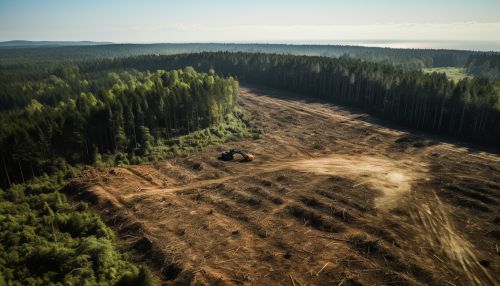The Impact of Deforestation on Global Biodiversity
Introduction
Deforestation, the process of removing or clearing large quantities of trees and forests, has significant impacts on global biodiversity. Biodiversity, a term that refers to the variety of life on Earth at all its levels, from genes to ecosystems, can be adversely affected by deforestation. This article will delve into the intricate relationship between deforestation and biodiversity, exploring the various ways in which the former influences the latter.
Deforestation: An Overview
Deforestation is primarily driven by human activities such as agriculture, logging, and infrastructure development. It involves the permanent removal of forest cover to make way for other land uses. This process not only alters the landscape but also has far-reaching implications for biodiversity and the overall health of the planet's ecosystems read more.


Impact on Species Diversity
One of the most direct impacts of deforestation is the loss of species diversity. Forests are home to a majority of the world's terrestrial species, and their destruction leads to habitat loss, one of the primary causes of species extinction. This loss of species diversity can have cascading effects on the food web, disrupting the balance of ecosystems and potentially leading to the collapse of entire ecological communities.
Impact on Genetic Diversity
Deforestation also affects genetic diversity within species. When a forest is cleared, the populations of species living in that area are often fragmented. This fragmentation can lead to a decrease in genetic diversity as smaller, isolated populations are more susceptible to inbreeding and genetic drift. Reduced genetic diversity can make species more vulnerable to diseases and changes in the environment, potentially leading to population declines or even extinction.
Impact on Ecosystem Diversity
Ecosystem diversity, which refers to the variety of different ecosystems on the planet, is also threatened by deforestation. Forests themselves are diverse ecosystems, ranging from tropical rainforests and temperate deciduous forests to boreal forests and mangroves. Each of these forest types supports unique communities of plants and animals. When these forests are cleared, the unique ecosystems they support are also lost.
The Role of Deforestation in Climate Change
Deforestation plays a significant role in climate change, another factor that can greatly impact biodiversity. Forests act as carbon sinks, absorbing CO2 from the atmosphere and helping to mitigate the effects of climate change. When forests are cleared, not only is this important function lost, but the carbon stored in the trees is released back into the atmosphere, contributing to global warming. Changes in climate can, in turn, affect biodiversity by altering habitats and disrupting species distributions.
Mitigating the Impact of Deforestation on Biodiversity
There are several strategies that can be employed to mitigate the impact of deforestation on biodiversity. These include the establishment of protected areas, the promotion of sustainable forestry practices, and the restoration of degraded forest lands. In addition, efforts to reduce the demand for products that drive deforestation, such as palm oil and timber, can also help to slow the rate of forest loss.
Conclusion
Deforestation has profound impacts on global biodiversity, affecting species diversity, genetic diversity, and ecosystem diversity. It also plays a significant role in climate change, which can further impact biodiversity. However, through the implementation of various mitigation strategies, it is possible to reduce the impact of deforestation on biodiversity and help to preserve the planet's rich biological diversity for future generations.
